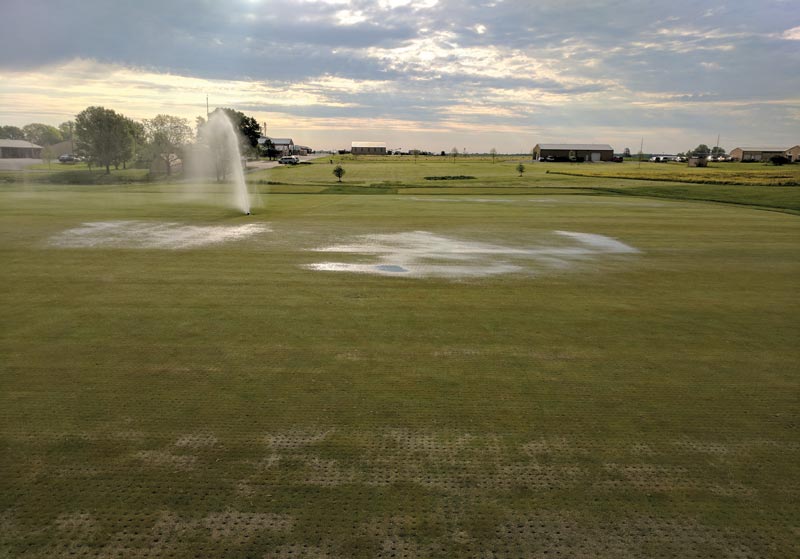
Photo by Matthew Fleetwood
Wetting agents — amphiphilic molecules that contain both a hydrophobic tail and a hydrophilic head — are used to alleviate soil hydrophobicity on putting greens. Once a wetting agent has moved into the root zone, the hydrophobic tail adheres to the hydrophobic sand grain, allowing water molecules to attach to the hydrophilic head, thus promoting wetting.
Ideally, a wetting agent would maintain a balance between adequate water retention and fast infiltration, thereby promoting a firm playing surface.
Our previous experiments showed that various wetting agents reduce the surface tension of water by 36% or more, resulting in enhanced water infiltration into water-repellent soil.
In 2018, we performed a field experiment on a 007 creeping bentgrass USGA green where soil hydrophobicity had been observed. Six wetting agents (H2O Maximizer, Capacity, Aqueduct, Infiltrix, TriCure AD and Primer Select), representing different capacities for reducing the surface tension of water, were applied to replicate field plots on a monthly basis.
Compared with the untreated control, H2O Maximizer maintained 3% higher volumetric water content throughout the growing season and resulted in 60% less localized dry spot (LDS). Control plots with no wetting agent application displayed a decreased infiltration pattern in summer. Like H2O Maximizer, Capacity maintained a steady infiltration rate. Aqueduct led to elevated infiltration in the first two months, but like Capacity, it resulted in 61% less LDS formation. The other wetting agents tested maintained a higher infiltration rate than the USGA recommendations as well, and reduced LDS by 50%.
Collectively, our results suggest that surface tension alone does not predict overall wetting agent performance, but head-to-tail ratio likely contributes to a product’s effectiveness in balancing water retention and maintaining a firm playing surface.
— Matthew Fleetwood; Stephen H. Anderson, Ph.D.; Keith Goyne, Ph.D.; and Xi Xiong, Ph.D.,
University of Missouri, Columbia, Mo.
Teresa Carson is GCM’s science editor.